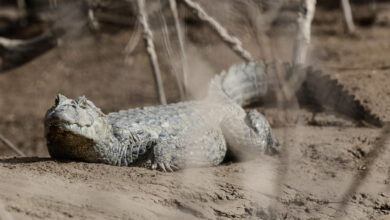Forest fires: a growing threat to the world’s forests
Recent fires in the Amazon, Australia and the United States have highlighted the threat that fire poses
Recent fires in the Amazon, Australia and the United States have highlighted the threat that fire poses .

Fires threaten the world’s forests. / Photo: Pixabay
LatinAmerican Post | Jorgue Guasp
Listen to this article
Leer en español: Incendios forestales: una amenaza creciente para los bosques del mundo
Examples of large forest fires in the world
"The fires threaten the Chiquitanía again, between the Chaco and the Bolivian Amazon, and the Noel Kempff Mercado Park, one of the main Bolivian natural reserves, in the east of the country," published the German media Deutsche Welle on September 15, 2020. This area had already burned in 2019, threatening the Chiquitano dry forest, and in particular the Tucavaca Reserve. Eight days after this news, the same DW agency reported that the “Brazilian government is sending reinforcements to fight the fires in the Pantanal: the team is made up of military firefighters, vehicles and a helicopter, who will have to act for 30 days. They will join the 2,500 people who are already fighting the flames that have been hitting the world's largest wetland since March ”.
The Report on forest fires 2020: The planet on fire, from the World Wide Fund for Nature (WWF), asserts that “2019 has been characterized by an exceptional incendiary activity in terms of severity and emissions. The combination of prolonged heat waves, accumulated droughts and low humidity, together with very dry vegetation and unmanaged forests, is generating fires much faster and of a virulence never seen before. Furthermore, the periods of risk have been lengthened. This is the case of the fires in Australia, with firestorms of more than 1,000ºC, which killed dozens of people and more than 1,200 million animals ”.
The news portal CNN, from the United States, spread the news on September 15, 2020 that "The California fires, which have left at least 36 dead and destroyed more than 1.7 million hectares, are fueled by the climate change, according to officials in California and Washington ”.
How does a forest fire start and spread?
For fire to occur, three elements must combine sufficiently: oxygen, heat, and fuel. Heat, in turn, is transmitted in three different ways: radiation (transfer through space), convection (rise of hot air masses), and conduction (direct contact).
A forest fire can be started by an uncontrolled burning, an intentional fire, a badly extinguished campfire, a cigarette butt thrown on the dry leaf litter, a lit cigarette that moves, lightning during a thunderstorm, and sometimes by the magnifying glass effect (concentration of sunlight) exerted by a piece of glass on a dry plant substrate.
The probability of fire spread depends on the quantity and continuity of the fuel (vertical -from the ground to the top of the trees-, and horizontal), on the relative humidity of the environment and the fuel, on the exposure of the ground to the sun, the nature of the fuel (resinous trees, for example, burn easily), the relief and atmospheric conditions, among other factors.
Also read: New global temperature data will inform study of climate impacts on health, agriculture
How to prevent forest fires?
Preventive measures are diverse, and vary according to regional characteristics of the climate and vegetation. However, there are certain basic precautions to adopt in areas with high fire risk:
- Establish regulations on prevention, and carry out surveillance (through towers, satellites, drones, etc.) and dissemination among the population of the risk of fire and precautionary measures.
- Identify firebreaks, natural or built, that allow access to areas with high fire risk, and interrupt the continuity of forest fuel.
- Control forestry operations, to avoid the accumulation of remains that could favor the spread of a fire. Controlled burning is also often necessary to reduce the volume of forest debris and thus prevent large fires.
- In plantations for the production of wood, it is important to prune the trees (to prevent the spread of fire from the ground to the crown), and remove the dead or dominated specimens.
- Identify sites for the eventual landing of hydrant planes or helicopters, and sources of water supply.
- Avoid burning during high fire risk times.
The fire has already broken out: what to do to extinguish it?
A fire can be fought directly (extinguishing the fire), or indirectly (controlling it through natural and artificial firebreaks, which prevent its spread).
The plan to be used depends, among other factors, on the shape and size of the fire, the speed of propagation and height of the flames, the topography, the type and quantity of fuel, the available resources, the accessibility to the place, the weather forecast, and the availability of barriers or firebreaks (mirrors or water courses, rocky areas, roads, etc.). It is imperative that the plan of attack is communicated effectively and clearly, and that there is a decision maker. The priority is to safeguard people's lives, and their personal property.
In the case of large fires in accessible terrain, heavy machinery such as bulldozers, motor graders, tractors, etc. are sometimes used to knock down vegetation and draw firebreaks that stop the advance of the flames. In other cases, firebreaks are opened by hand, with tools such as pulaski (ax-hoe), chainsaw, shovel, macleod (rake-hoe), etc., digging to remove the layer of organic soil, until reaching the mineral substrate. Some of these tools allow you to cut vegetation and extract roots.
When the bulbs are small, they can be extinguished by throwing dirt at them with a shovel, or even hitting the lit material with a fire-bat (a tool that puts out the fire by suffocation). To dispense water manually, it is necessary to install a hose line, connected to a pool or water mirror, and a pump.
Throwing water is key to reducing oxygen and cooling the area. The water can be thrown with lances and backpacks, or through aerial means (planes and helicopters), which also disperse chemicals to retard combustion. The aerial means are fast, they allow the fire to be seen from the air, they throw a large quantity of water on places that are difficult to access, and they can transport personnel to fight the fire. The fire engines are often used for indirect attack, that is, to wet firebreaks and stop the advance of the fire.
Sometimes the way to fight the fire is to burn the area where the fire is heading in advance, so that the fire runs out of fuel. The defense lines, free of vegetation, stop the advance of the fire or serve as support for the direct combat of the flames. These lines must have an anchor point, which allows safe access to an escape route.
The organization of work is as important as fighting the fire itself. Combatants must have adequate equipment, water and food, and their number must be sufficient to carry out relays and avoid exhaustion. Although the fire has been extinguished, after the fires “ash guards” are set up, which consist of guarding the burned area to prevent the remaining ashes from starting a new fire.
Forest fires: global catastrophes with devastating consequences
In recent years fires have occurred in different regions, both in developed countries and in the third world. These phenomena, which climate change seems to have accentuated, can start out of carelessness and spread to devastate thousands of hectares of forest. One match is enough to start a fire; but a responsible decision is also enough to avoid it.




